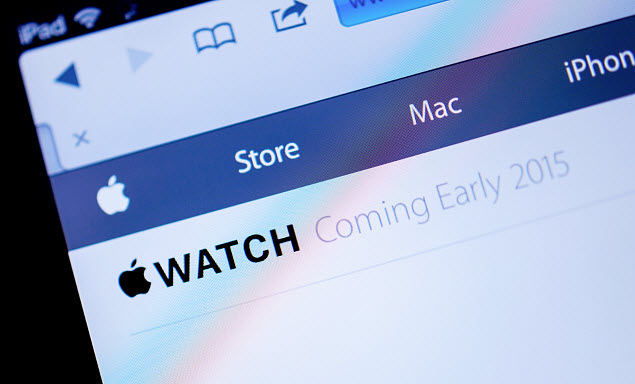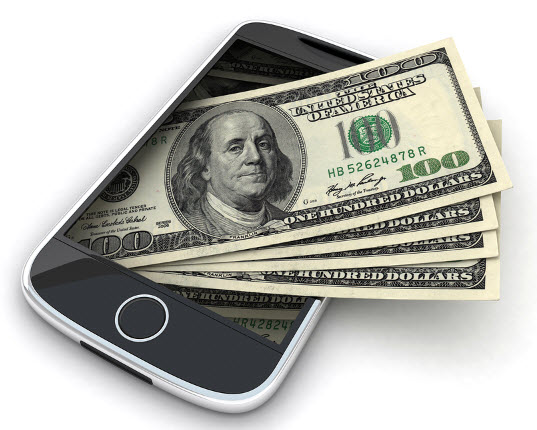According to the Apple CEO, its smartwatch will soon be a device people won’t want to live without.
The Apple Watch is expected to have its release date announced on March 9, at which time it will also likely reveal a number of additional details about this gadget, including more about its battery life, and how it may one day make car keys obsolete.
With a massive price tag of $349, the device will need to be impressive in order to convince people to pay.
That is the price that has been announced for the Apple Watch Sport version of the first smartwatch from the high end brand. The key will be to try to convince people why they will actually want the device in the first place. They will not, after all, be replacing traditional wristwatches, as many people stopped wearing those when they purchased their smartphones. Therefore, many people are wondering if having two smart devices on them at all times will simply be redundant. This is especially true because many of the features of the smartwatch will not function without being wirelessly connected to an iPhone.
According to CEO Tim Cook, the notifications are among the best reasons to get an Apple Watch.
 Cook explained that “I’m now so used to getting all my notifications and all my messages.” He went on to add that “It’s so incredible just to do this,” he said as he glanced down at his wrist, instead of having to take his iPhone out of his pocket. This could be quite convenient for a smartphone user. If a new notification arrives, it makes it possible for the smartwatch wearer to simply glance down at the wearable technology to see if the incoming call, text, email, or other type of alert is something that requires an immediate response.
Cook explained that “I’m now so used to getting all my notifications and all my messages.” He went on to add that “It’s so incredible just to do this,” he said as he glanced down at his wrist, instead of having to take his iPhone out of his pocket. This could be quite convenient for a smartphone user. If a new notification arrives, it makes it possible for the smartwatch wearer to simply glance down at the wearable technology to see if the incoming call, text, email, or other type of alert is something that requires an immediate response.
The question is whether something as simple as notifications will allow these wearables to stand out from among many others that are already offering that type of feature, and if people will be willing to pay more for the Apple Watch than they would be for those from rival companies.
In terms of the per capita spend on smartphone advertising, the United States is at the top of the list.
According to the results of a data analysis that were published in a Strategy Analytics report, the per capita multichannel, including mobile ad spend in the United States is greater than anywhere else in the world, and it is continuing to grow at an extremely rapid pace.
The report summary showed that the estimated total ad spend for in the U.S. totaled $181 billion, last year.
What that figure means is that when it comes to advertising spending (which includes mobile ad spending), the United States makes up one third of the entire global advertising market, said the report. Looking into this data further, it was revealed that in 2014, the amount spent on the average person was an estimated $567. This figure was found in the Global Advertising Market Forecast Outlook, which is the most recent report from Strategy Analytics.
In second place for advertising, including mobile ad spending, was Australia, which spent an average of $486 per person.
 Norway held the third place, where the per-capta television, online, and mobile marketing price tag was $472. Analyst from Strategy Analytics, Leika Kawasaki, explained that “To put this in perspective advertising spend per capita in the United States is 121 times larger than India and 16 times larger than China.” That statement provides a powerful illustration of the difference in the amount being spent on mobile advertising in the U.S. when compared to countries in which the population and the number of smartphone owners is considerably greater.
Norway held the third place, where the per-capta television, online, and mobile marketing price tag was $472. Analyst from Strategy Analytics, Leika Kawasaki, explained that “To put this in perspective advertising spend per capita in the United States is 121 times larger than India and 16 times larger than China.” That statement provides a powerful illustration of the difference in the amount being spent on mobile advertising in the U.S. when compared to countries in which the population and the number of smartphone owners is considerably greater.
Kawasaki went on to explain that “China which has the second largest advertising market globally has the second lowest average spend per capita at $35 per person.” The difference is primarily that the United States still pays a tremendous amount for television advertising, more than any other country.
That said, as digital – particularly online and mobile ad strategies – become increasingly important, the gap is starting to close between the per-spending in the United States and other countries around the world. This is only one more way in which the ubiquitous nature of smartphones is revolutionizing the digital world.
 Cook explained that “I’m now so used to getting all my notifications and all my messages.” He went on to add that “It’s so incredible just to do this,” he said as he glanced down at his wrist, instead of having to take his iPhone out of his pocket. This could be quite convenient for a smartphone user. If a new notification arrives, it makes it possible for the smartwatch wearer to simply glance down at the wearable technology to see if the incoming call, text, email, or other type of alert is something that requires an immediate response.
Cook explained that “I’m now so used to getting all my notifications and all my messages.” He went on to add that “It’s so incredible just to do this,” he said as he glanced down at his wrist, instead of having to take his iPhone out of his pocket. This could be quite convenient for a smartphone user. If a new notification arrives, it makes it possible for the smartwatch wearer to simply glance down at the wearable technology to see if the incoming call, text, email, or other type of alert is something that requires an immediate response.
 Norway held the third place, where the per-capta television, online, and mobile marketing price tag was $472. Analyst from Strategy Analytics, Leika Kawasaki, explained that “To put this in perspective advertising spend per capita in the United States is 121 times larger than India and 16 times larger than China.” That statement provides a powerful illustration of the difference in the amount being spent on
Norway held the third place, where the per-capta television, online, and mobile marketing price tag was $472. Analyst from Strategy Analytics, Leika Kawasaki, explained that “To put this in perspective advertising spend per capita in the United States is 121 times larger than India and 16 times larger than China.” That statement provides a powerful illustration of the difference in the amount being spent on 